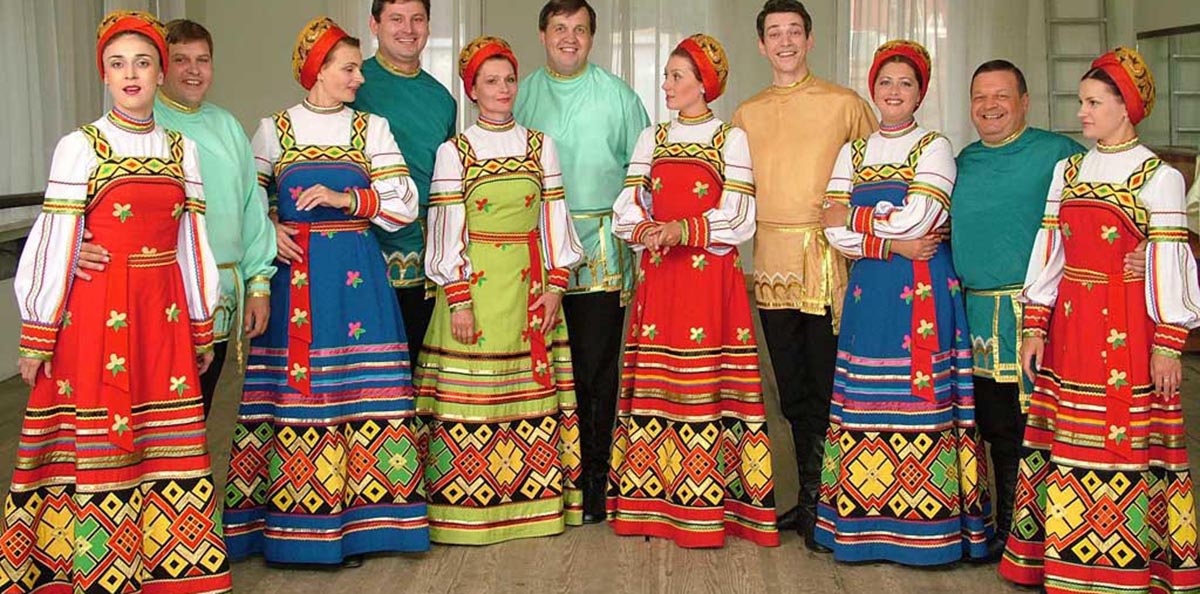
In a world where culture tends to be increasingly global, traditional cultural of each country they resist like the hearts of the peoples. And when that town occupies a great territorial extension, its culture is likely to be rich, varied, diverse. It is the case of Russia.
Today we will talk about Russian traditional costume. A colorful suit, with great decorations and always handmade. As a legacy of the ancestors, this costume continues to appear in churches, theaters, dance studios, festivals.
The traditional Russian costume
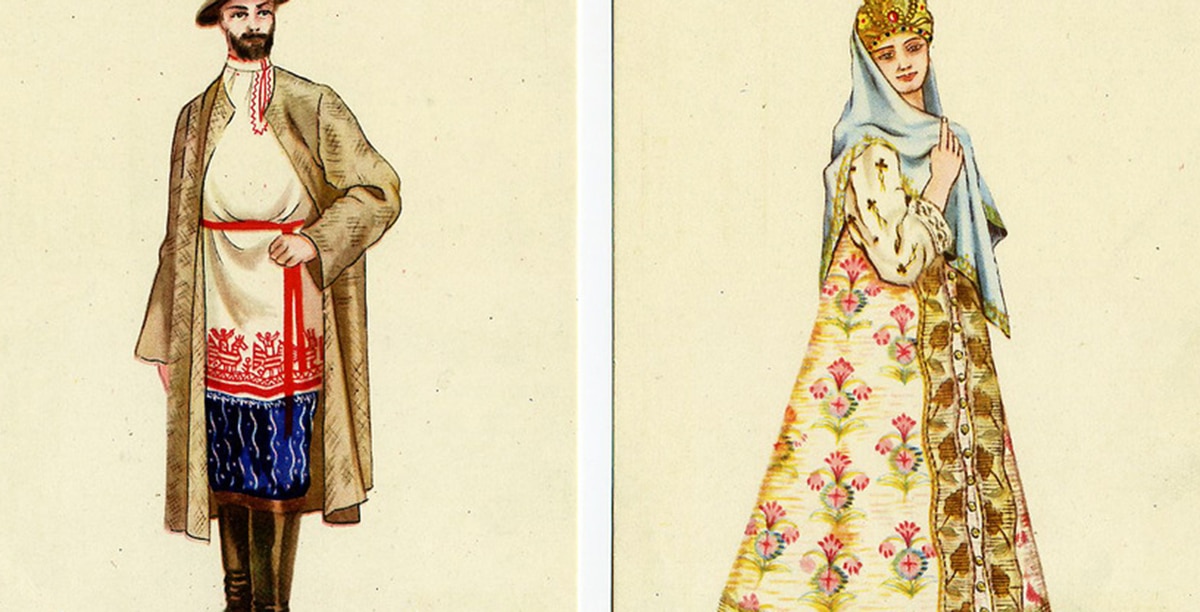
The traditional Russian costume began to develop as such, with its specificities, from the XNUMXth century. It is not known for sure when but it is estimated that it was on that date or a century earlier.
Until the beginning of the XNUMXth century, peasants and boyars (the nobles) wore traditional costumes, but in 1700 Tsar Peter the Great began to introduce some changes wearing himself more western clothes. Pedro liked Europe, he admired it, so he began to ban the use of traditional costumes, at least in Russian cities.
It was then up to the Russian peasants to preserve and preserve the richness and beauty of traditional Russian clothing. Some of the traditional pieces are no longer used today, but others managed to survive the passage of time, eventually becoming iconic.
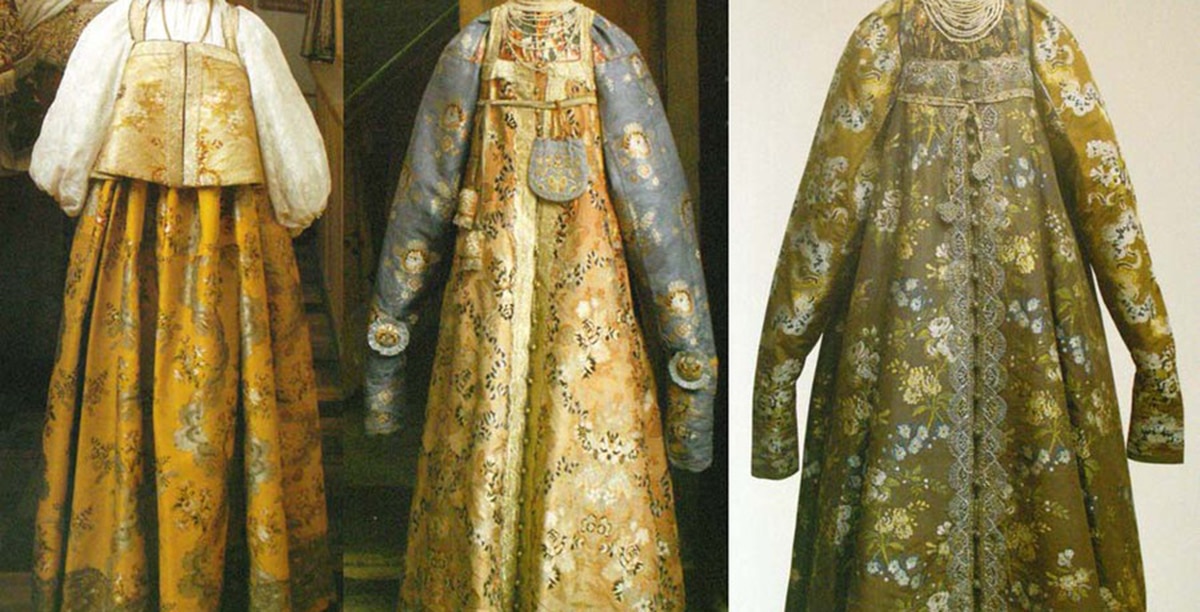
But is there more than one traditional Russian costume? Of course. In principle, we can talk about two, the sarafan and the poneva. The sarafan is like un midrange jumpers loose and long worn over a long linen shirt fastened with a belt. This belt is a classic and was worn under the sarafan. This garment is mentioned for the first time during the fourteenth century and was worn only by men, only in the seventeenth century it appears as a woman's garment.
The sarafan made with plain linen or cheap printed cotton which was produced in quantity in factories in Moscow and the Ivanovo and Vladimir regions. This long, colorful dress with open shoulders was worn over a simple garment called a rubakha.
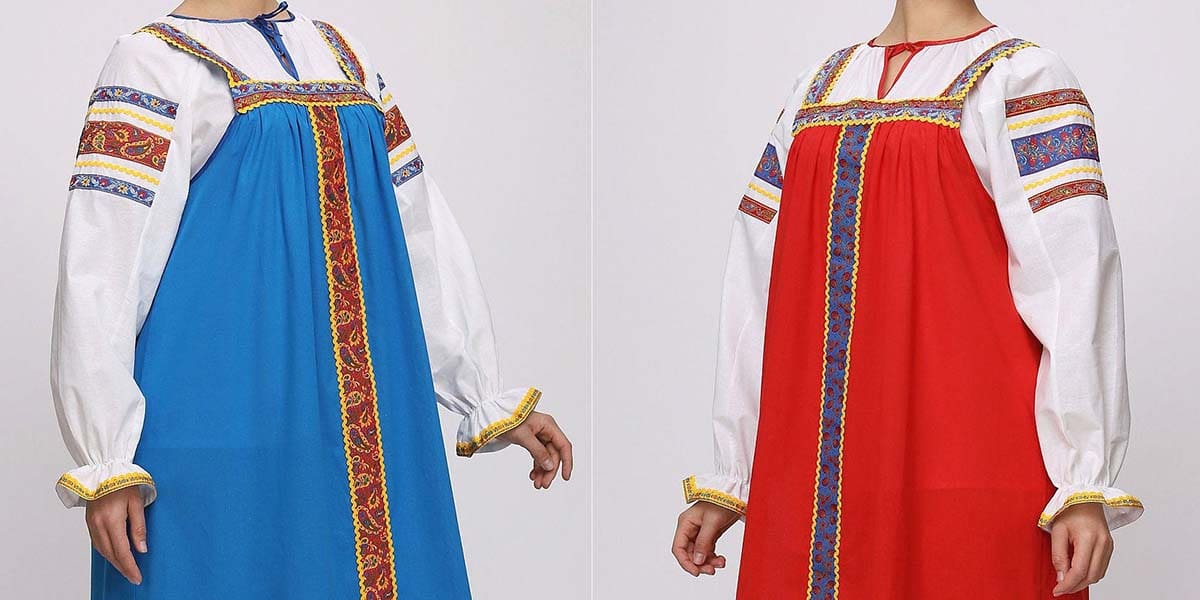
If the sarafan was required on a special occasion, then you could add silks and brocades or embroidered with gold and silver. The use of the sarafan spread throughout the northern provinces of the then Russian Empire, to Novgorod, Pskov, Vologda and Arkhangelsk.
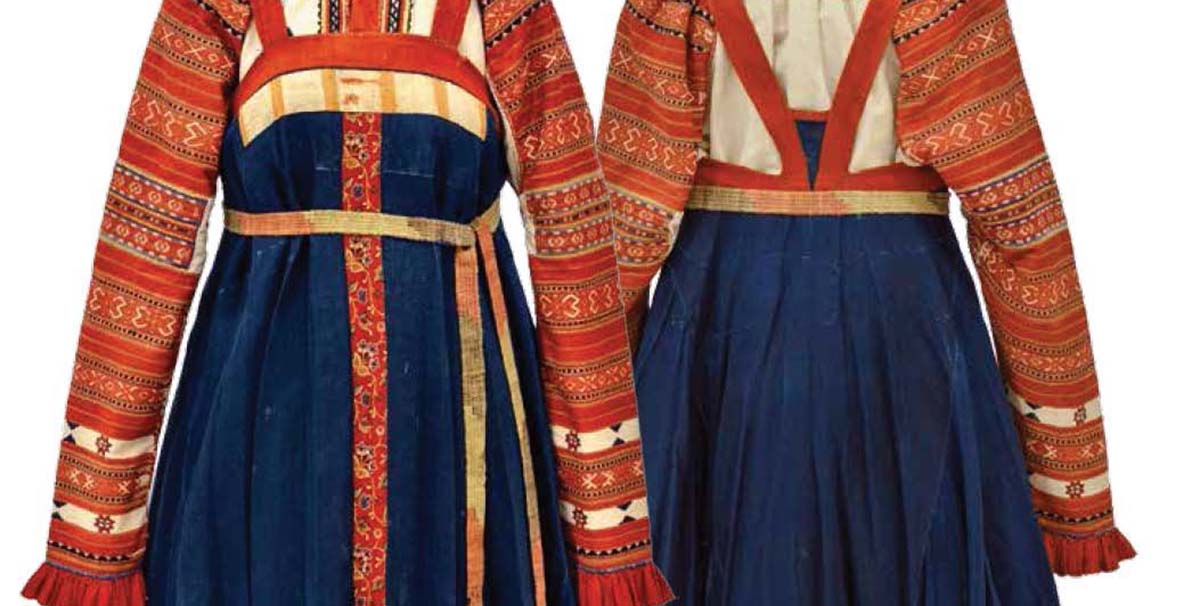
Now, la poneva is a type of skirt commonly used in the provinces south of Moscow such as Voronezh, Tambov and Tula. It is indeed, older than sarafan. The poneva is a plain or striped skirt tied with rope or wrapped around the hips, worn with a loose shirt with embroidered sleeves and an apron lavishly decorated with bows and colorful ornaments.
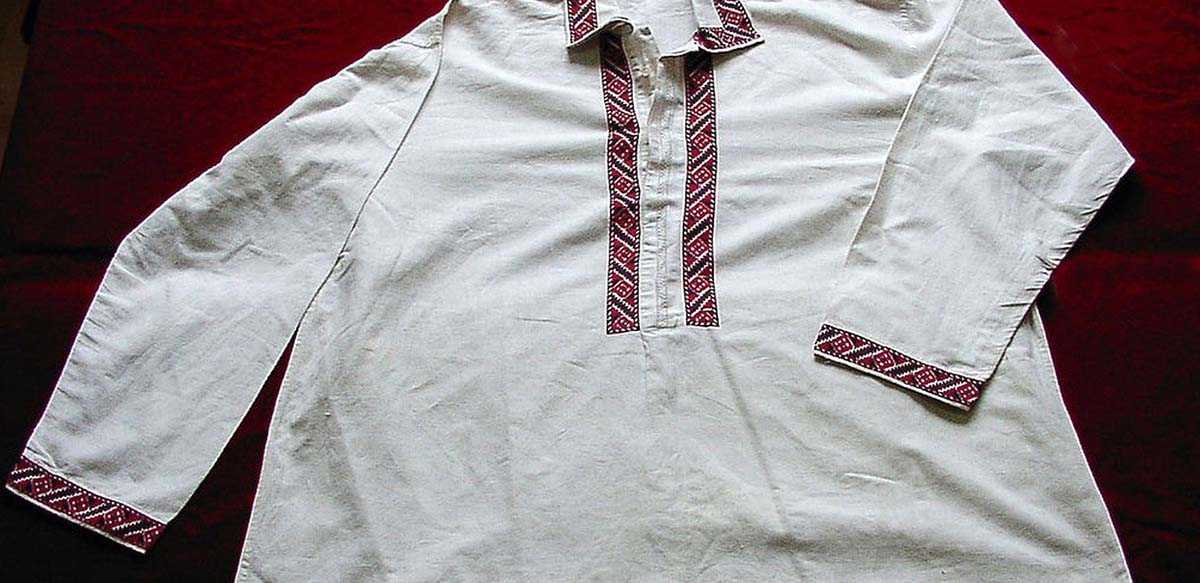
On the other hand we have the rubakha, a shirt oversize which is like the basic element of the Russian costume. It was used by everyone, men, women, rich and poor. The fabric can then be fine or cheap, silk or cotton. It was a very comfortable garment and almost nothing has changed until the twentieth century.
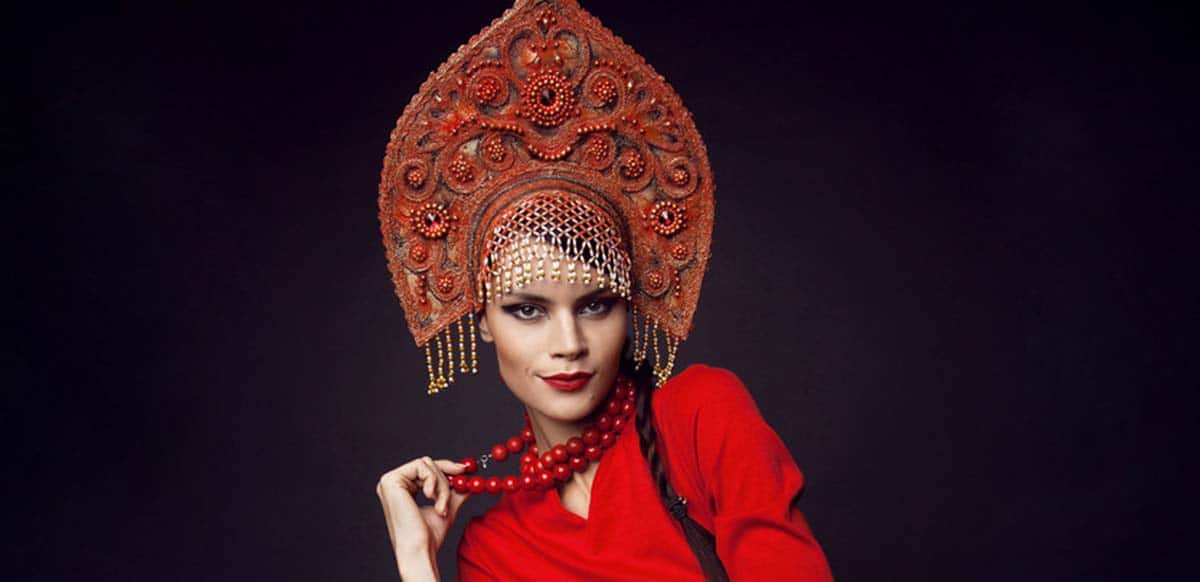
The kokoshnik was a feminine garment that decorated the head. It was common for women to wear head and hair ornaments, and depending on social status they were allowed to make a show of those ornaments. Married women had to cover it completely with this garment, but single women could decorate with flowers and other things. This element used to be made with expensive materials and only appeared a few times a year.
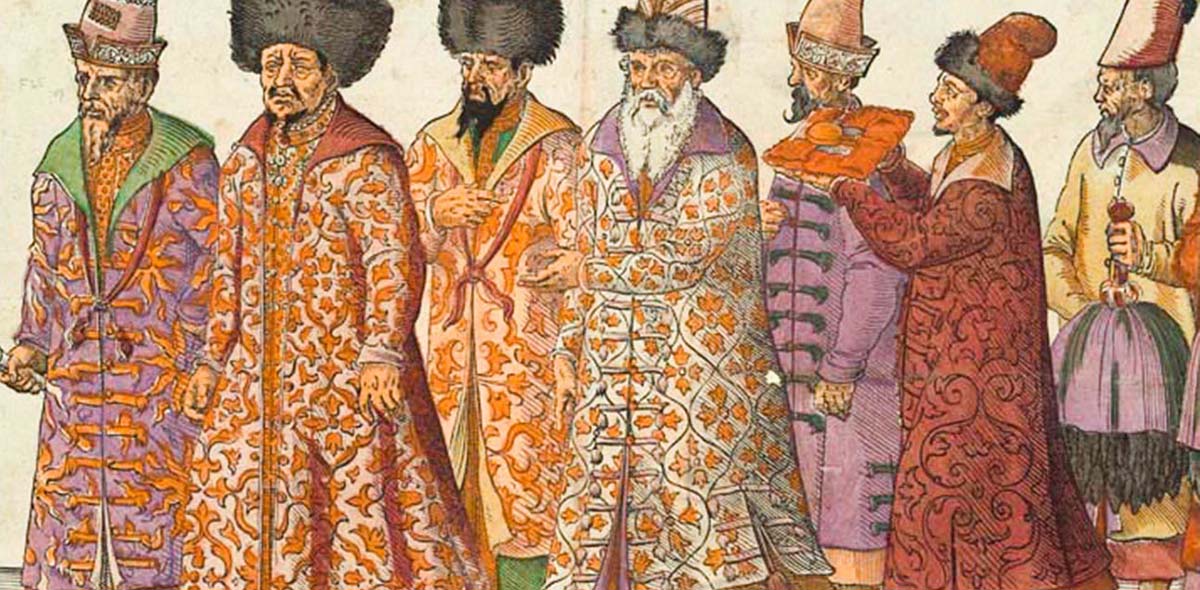
For everyday life only hats or a tied shawl called povoyniki were used. The fur coat is called shuba and it has survived the centuries, being very popular throughout the country. It was used by both men and women, because remember that Russia has an icy climate. The skin used to be used on the inner side of the garment while on the outside there were other decorations. Today the coat is simpler but it has the same purpose: to keep warm.
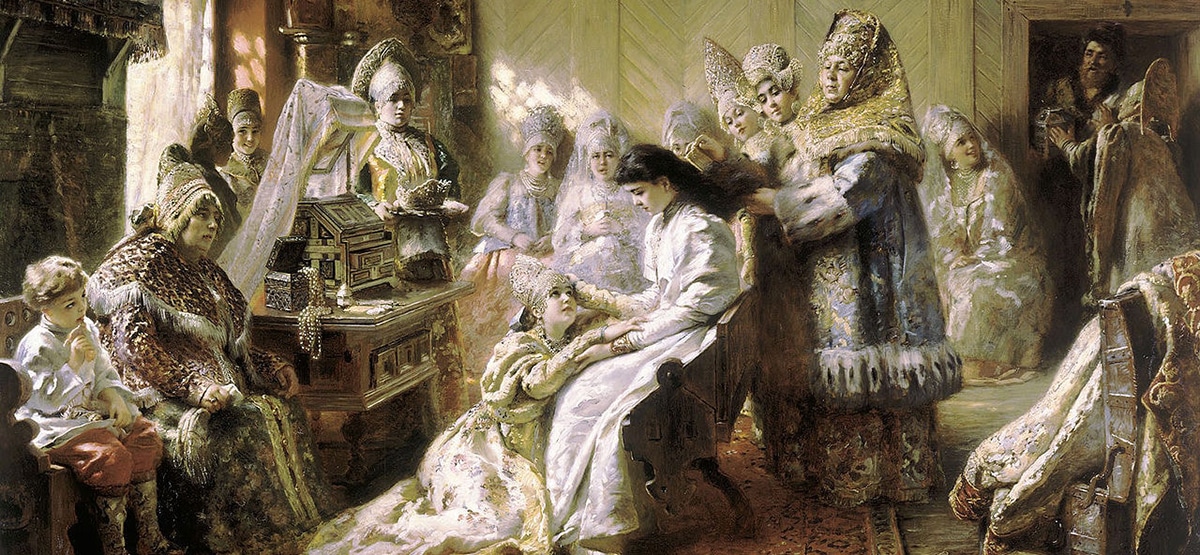
The word kaftan It is better known because it is a word that comes from the Middle East. However, it has penetrated deep into Russia and is almost part of their typical costumes. Is a coat, quite similar to any modern coat, but which is made with expensive fabrics and decorated with embroidery. As Russia is a huge country, fabrics vary and so do decorations. Sometimes they have embroidered pearls, in the south there are buttons or woolen decorations.
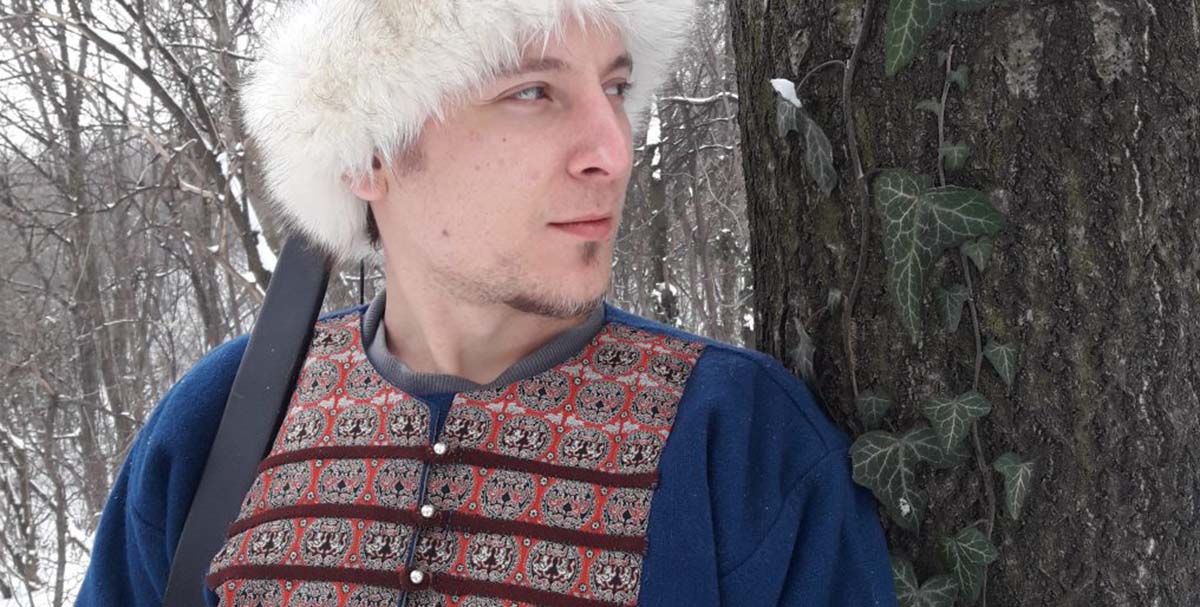
Now, From the fourteenth to the eighteenth century there are some changes in the traditional Russian costume due to the closer contacts between Russia and Europe. Let's think that at that time Italy or France exported wool, silk and velvet and decorated garments began to take on importance. For example, in the time of Ivan the Terrible those who entered the Kremlin had to wear traditional costumes as a way of respecting the throne or in the seventeenth century those who were "westernized" a lot, in clothes and hairstyles, were punished.
Thus, except for moments and exceptions Western fashion had a hard time penetrating Russia. As we said before, after Peter the Great arrived and things changed from the hand of this reformer of customs. The imperial family took the initial step in the change of fashion, dressing the European style, more of a French bent, with corsets and high headdresses that women began to wear.
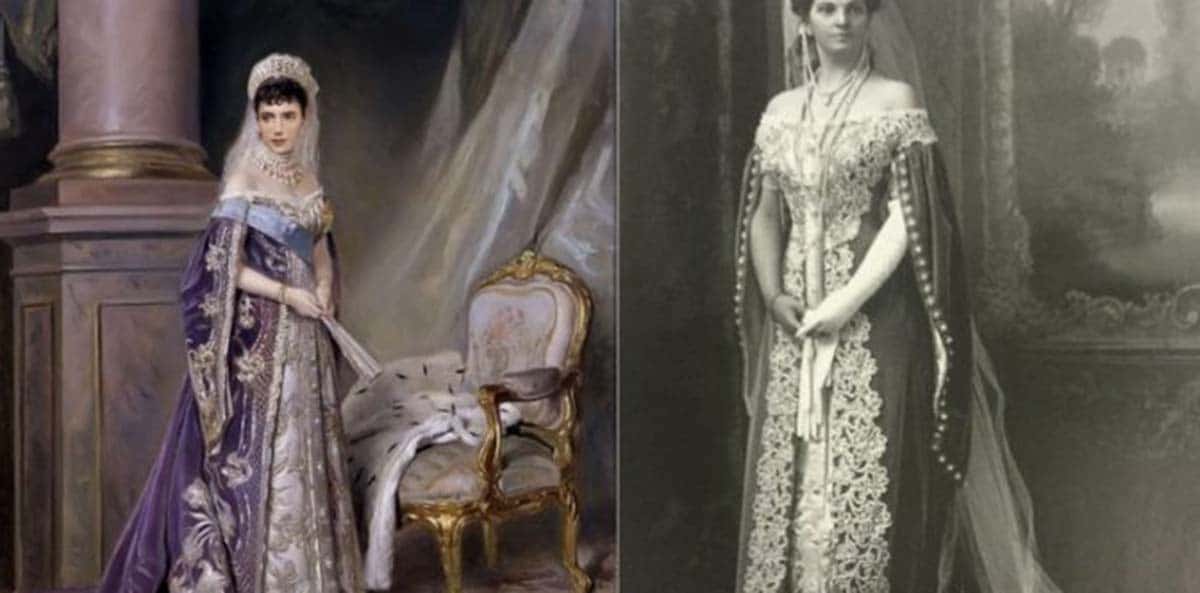
Obviously, only the rich could afford such changes in fashion, so immediately there was that dividing line between those who had economic power and wore it by visiting the European and those who did not have it and should stay with traditional clothes. In the cities, Moscow or St. Petersburg it was much more noticeable.
In the XNUMXth century and XX the rococo style became prevalent, but with the new century fashion was simplified and then the most comfortable Russian garments like the beloved sarafans returned to the ring. With the Soviet Union the style was simplified even more, but somehow in festivals the traditional Russian costume or costumes managed to be preserved.